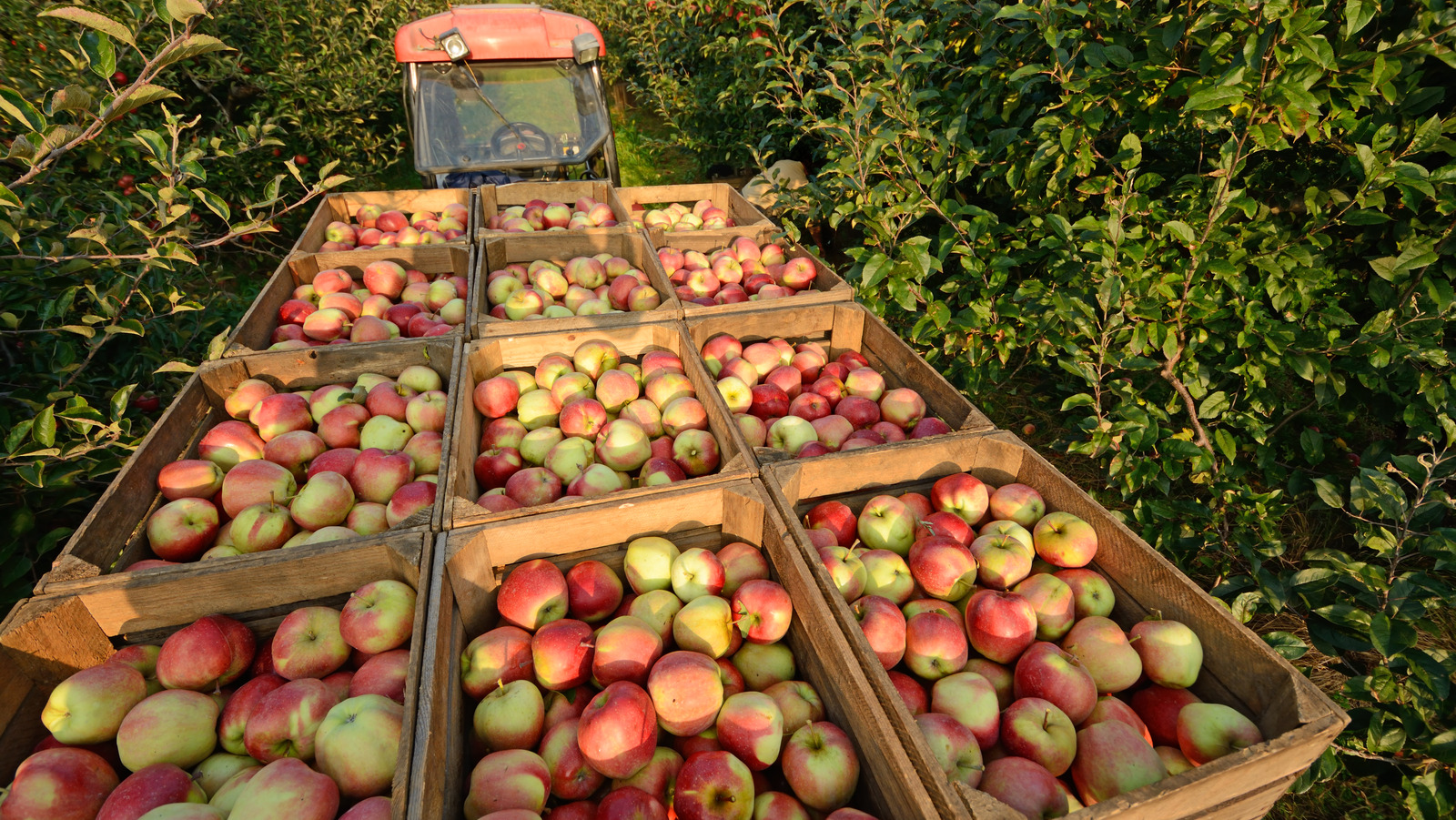When you think of apple production, the first place that is likely to come to mind is The Evergreen State of Washington. After all, it is the leading producer of apples in the United States, growing over 30 different varieties of apples that can be used for baked goods, making caramel apples, brewing warming ciders, and more. However, on a global scale, though the United States is among the top five producers of apples, its output pales when compared to the mammoth production of China. It may not be the first country you think of when imagining a thriving apple-growing industry. Yet, per 2022 stats published in the World Population Review, the country produces nearly 10 times the amount of apples grown in the United States. Fuji apples are among the most commonly grown varieties in China and account for the majority of the nation’s apple production. Other varieties familiar to American shoppers include Golden Delicious and Gala apples, while those such as Zhaotong are ingrained in the history of apple cultivation in China.
One can easily identify fresh apples imported from China as they will have a sticker indicating the country of origin, which is a requirement per USDA regulations. Despite China’s strong foothold in global apple production, America’s thriving domestic harvest accounts for over 90% of apples available in the country, according to the USDA. So, the chances of finding domestically-grown apples at any mainstream supermarket or big box store are quite high. To further strengthen the “support local” ethos, your best bet is to visit your local farmers market and community-supported agriculture systems in your area.
A brief history of apple cultivation in China
The long and rich history of apple cultivation in China surpasses that of the United States by centuries, dating back over two thousand years. Modern-day apples are believed to have evolved in the highlands of Kazakhstan, which neighbors western China, and were introduced to Chinese agriculture by the Silk Road. Archaeological data indicates that some of the earliest apples planted in ancient China were varieties local to western Xingjiang. Around the time of the Han and Tang dynasties, the cultivation of diverse apple varieties became more widespread, as farming practices advanced and fruit orchards gradually expanded across the landscape. Provinces like Shaanxi and Shandong became prominent hubs for growing apples due to their ideal temperate climates that were optimal for a successful crop, which was valued for both its culinary and medicinal properties.
Traditional Chinese Medicine prizes apples picked at their prime for their purported ability to balance changes in the body during seasonal transitions, cooling and hydrating the body, and decongesting the system, among others. Apples are also a foundational ingredient in Chinese cooking, where they are simmered in herbal soups or brewed into comforting teas. Eventually, China took the lead as the largest exporter of fresh apples in 2004, and to date, it remains among the top three apple exporters in the world. However, it wasn’t until 2015 that the U.S. officially allowed imports of fresh apples from China due to prior food safety concerns. Perhaps it’s warranted to say that taking a bite of a juicy apple is a taste of history that has transcended global borders over millennia and found its way to lunch boxes and fruit baskets across the world.






